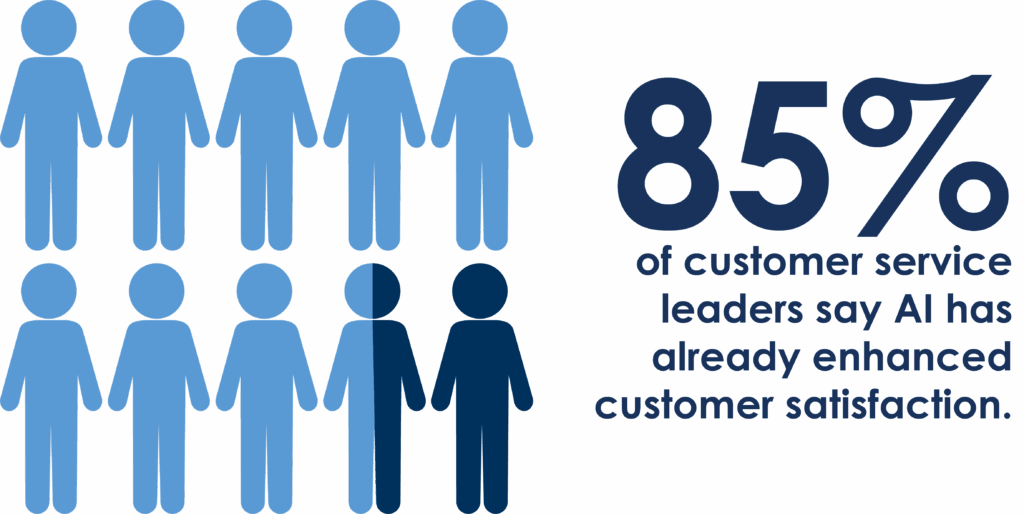
What is the difference between customer service (CS) and customer experience (CX)? Although these terms are often used interchangeably, they are not quite the same. Customer service is about one-to-one interactions between your customers and customer service teams.
Customer experience, on the other hand, is a much bigger story. It’s about how customers feel about your brand across every interaction, channel, and stage of their journey. Customer service is part of the CX umbrella. If customers reach out for CS, that service becomes one element of the customer experience.
As leaders, we need to understand and manage both, enabling our teams to drive efficiencies, elevate customer satisfaction, and ultimately strengthen long-term customer loyalty. Let’s take a closer look.
Customer Service at the Core
Customer service is about a single event or interaction. Customers reach out to your organization when they need advice and assistance. The goal is to resolve a problem or answer a question quickly and efficiently.
Customers may interact with employees in a brick-and-mortar shop face-to-face, through an email query, or via a call through a helpline at a call center. According to McKinsey statistics, call centers are here to stay. Recent reports have found that 70% of Gen Z consumers prefer telephone communication to solve problems, just as Millennials, Gen X, and Baby Boomers already do.

Unpacking Customer Service Value
Envision your customer calling your organization after a long day at work, with a nagging issue that requires help. Immediately, the call is placed on hold, as the minutes tick by, and the music loops endlessly. An occasional interrupting voice says, “Your call is important to us”.
I can assure you, importance is the last thing your customer is feeling.
Waiting on hold before speaking with an agent is downright irritating, and not the best starting point for a customer interaction. However, when engagement is quick and with little effort on the part of the customer, the results are positive. Efficient customer service makes customers feel valued and respected.
High-quality customer service is no longer optional, but it is a critical driver of business performance. Salesforce reports that 43% of customers say one poor service interaction is enough to stop them from buying from a brand again. On a more positive note, 88% of customers report that excellent customer service makes them more likely to make a repeat purchase.
Key metrics, such as average response time, first-call resolution, and Customer Satisfaction Score (CSAT), are used to assess customer service levels. Increasingly, Artificial Intelligence has the capacity to enrich customer service. A recent report from HubSpot states 85% of customer service leaders say AI has already enhanced customer satisfaction, resulting in improved response times and CSAT scores.

Lasting Loyalty Through CX
Customer experience refers to the overall impression a customer has of your brand through every interaction. Everything, from the point of awareness to marketing materials, advertising, social media, and website copy, all shape customer perception. The experience continues throughout the buyer’s journey, ultimately leading to brand loyalty or churn. Alignment in the brand strategy is essential.
Imagine a customer is shopping for athletic shoes. Initial brand awareness is a social media ad featuring an image of a fit jogger wearing shoes that are promoted as lightweight, comfortable, and performance-enhancing. After clicking the link, the customer is sent to your website. It’s easy to navigate and shares the same, consistent message about the shoes. The customer purchases through an easy checkout method, and the shoes arrive on time, exactly as advertised.
The customer experience would be entirely different if the website were clunky, shipping was delayed, the shoes arrived in a condition different from what was advertised, and customer service was difficult to reach. Good CX provides customers with a seamless experience, where finding information, making a purchase, and resolving issues are easy.
Competitive Edge of CX
Consistently delivering positive interactions turns customer satisfaction into a revenue stream. Organizations that excel at CX can demonstrate a clear correlation between customer satisfaction, growth, margins, and profitability.
Satisfied customers return more often and actively recommend your brand. Recent statistics gathered from Zendesk Benchmark data reports that 75% of customers will spend more on brands that offer good CX.
Organizations can measure customer loyalty using the Net Promotion Score (NPS), while Customer Effort Score (CES) measures the level of effort customers must exert to interact with a company. CES works to provide insights by complementing NPS and CSAT.
The CS–CX Connection
Customer service and customer experience are not interchangeable, but are complementary forces that, when aligned, create the foundation for scalable growth. Customer service ensures immediate needs are resolved, while customer experience anticipates future expectations and builds long-term loyalty. Loyalty is what turns transactions into relationships.
Leaders who recognize the distinction and invest in both are not only meeting today’s demands but also shaping a resilient, customer-centric business model that can thrive in any marketplace. This is the competitive advantage to ensure customer needs are met throughout the entire journey.





